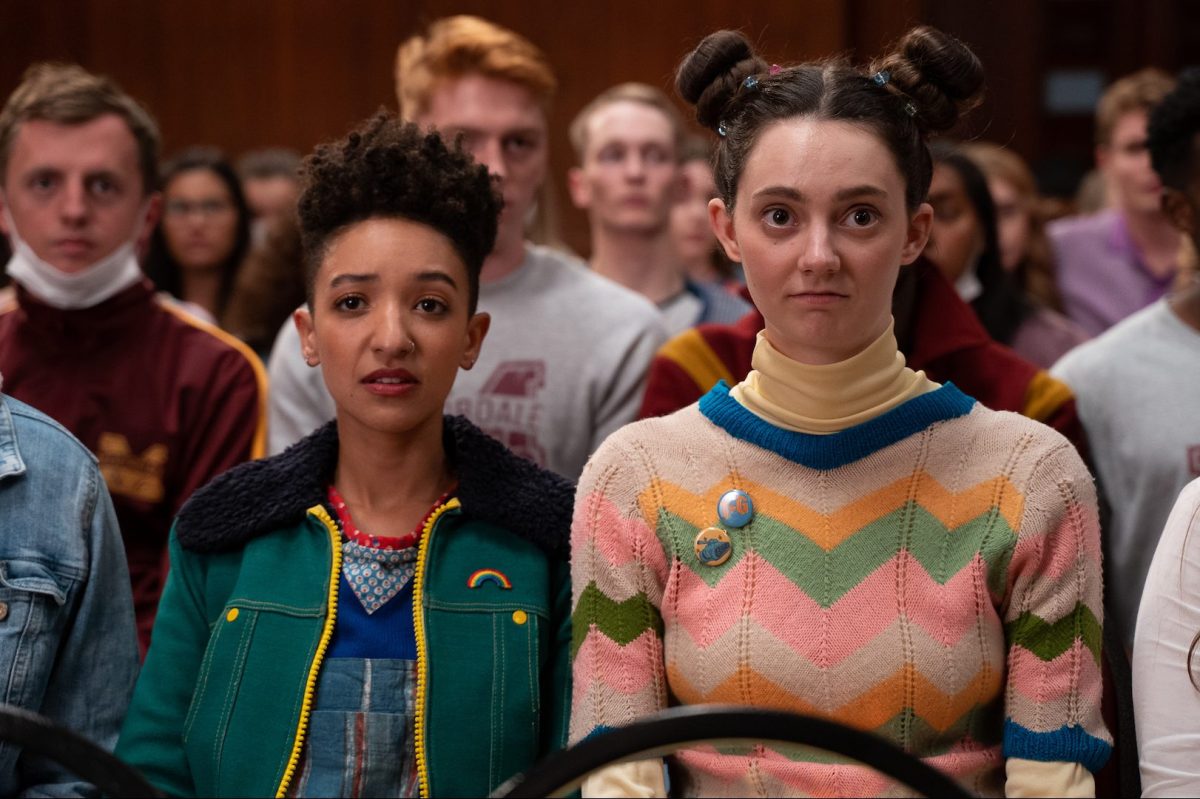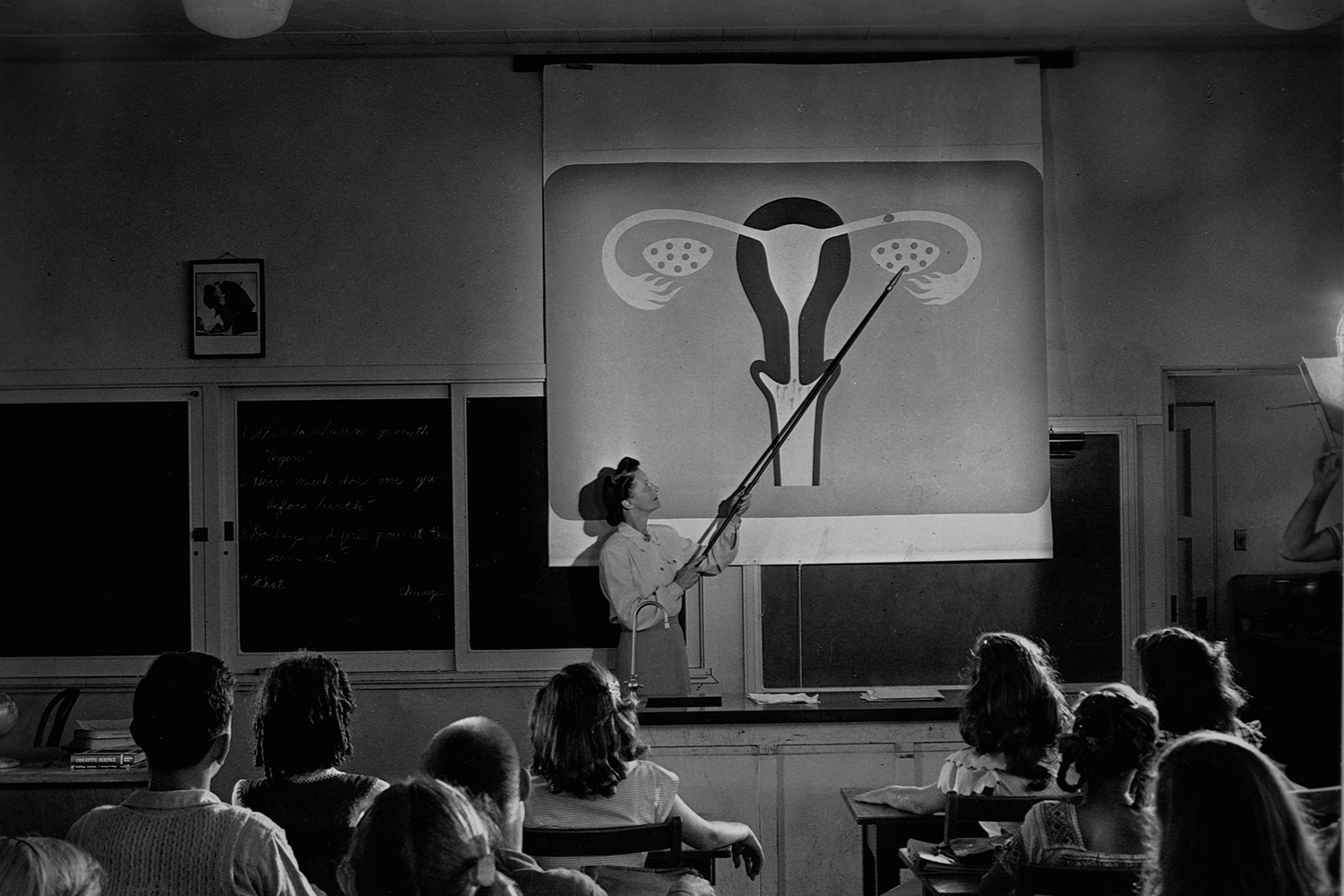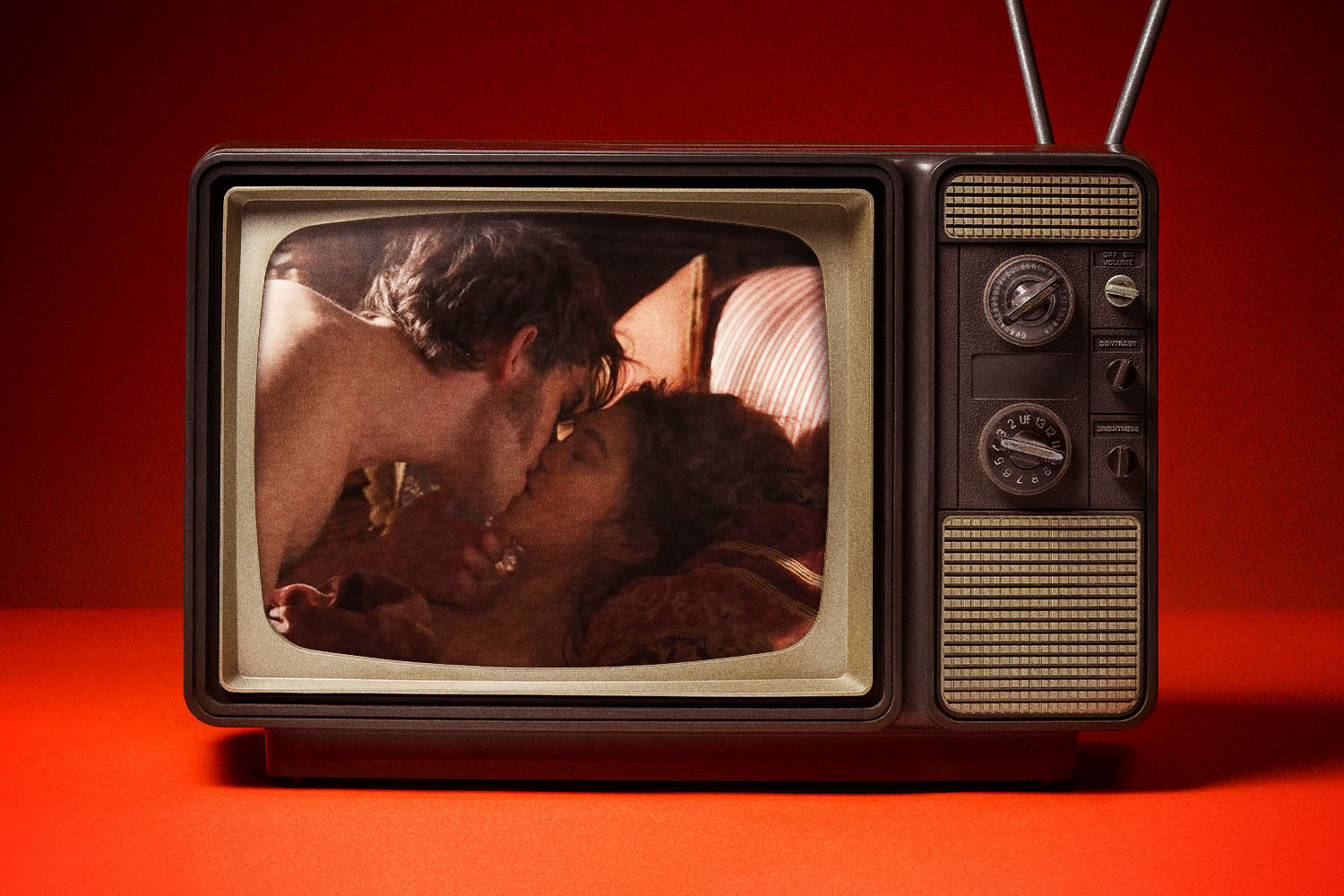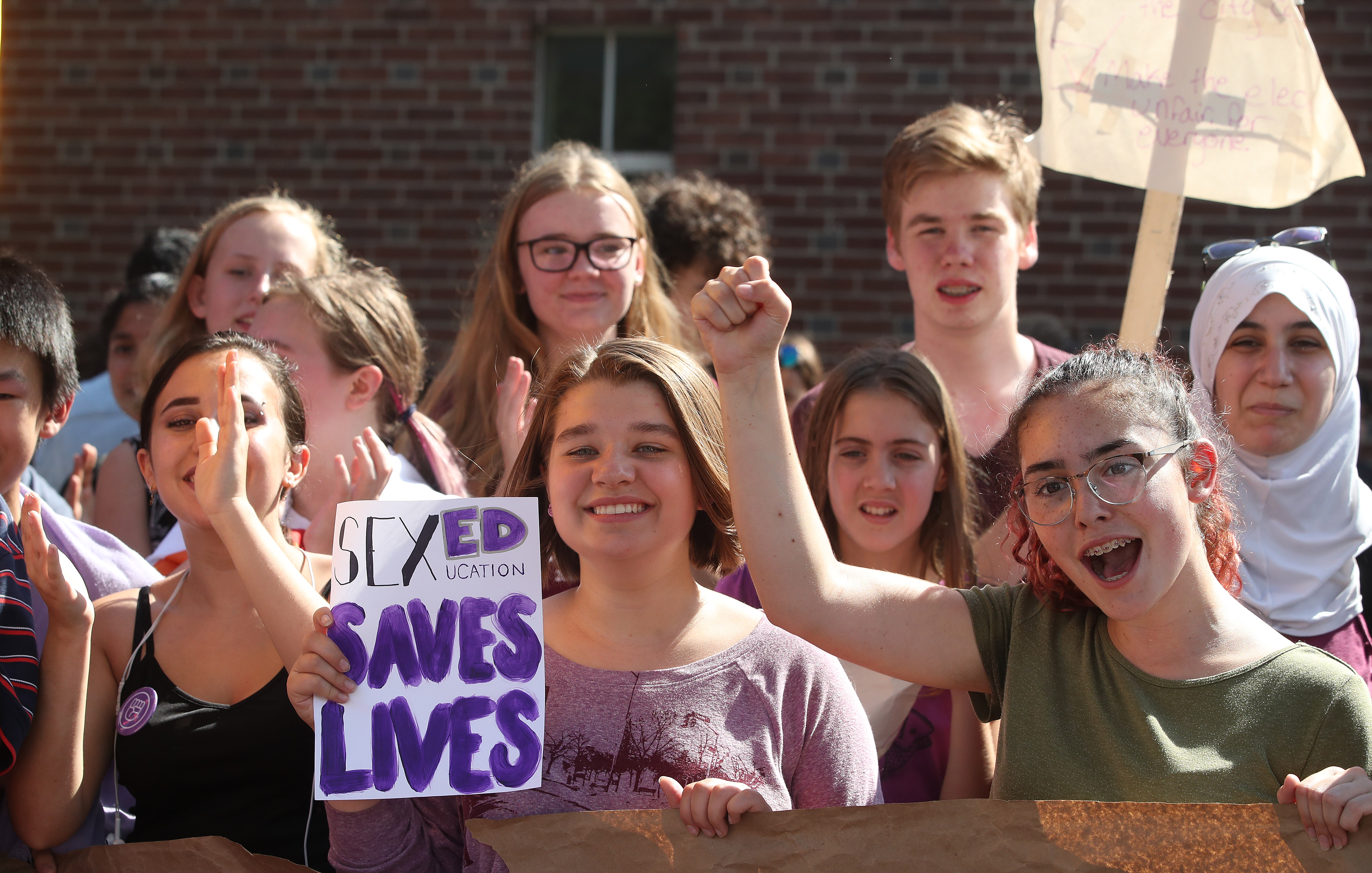Warning: this post contains spoilers for the third season of Sex Education.
From day one, Netflix’s Sex Education has been rooted in the idea that sex education programs — here in the States as well as in the U.K., where the show takes place — are severely lacking. The show’s initial concept, which involved young Otis (Asa Butterfield) and Maeve (Emma Mackey) charging their peers for sex advice and answers about their own anatomy, is rooted in the idea that the majority of teens are woefully ignorant about their bodies because we’ve failed them on multiple levels. Teen girls are afraid to tell their partners what they want in bed because society doesn’t prioritize female pleasure, boys lack a healthy understanding of consent because they’ve never been taught it, and anyone whose sexual or gender identity falls outside of the cis-heterosexual one that has been presented as the norm for far too long is left with shame and a lot of lingering questions.
Sex Education has always done an excellent job of righting some of those wrongs, dispelling common myths and presenting its sex scenes in a groundbreakingly realistic way to help its teenaged viewers hopefully see that they’re not alone, and how they’re feeling and what they’re into aren’t so weird, after all. But its recently released third season, streaming now on Netflix, takes it to a new level, giving us important representation of several marginalized groups and tackling issues rarely addressed in pop culture (especially the kind aimed at high-school students).
Season 3 picks up after a highly publicized chlamydia outbreak at Moordale last season. Former Headmaster Groff has lost his job as a result and been replaced with the younger Hope Haddon (Jemima Kirke), who tries to paint herself as hip by dancing to Wilson Pickett at an assembly and encouraging the students to call her by her first name, but she quickly reveals herself to be an old-fashioned taskmaster determined to restore the school’s reputation by requiring uniforms, instituting an abstinence-only sex education program and handing out cruel and unusual punishments to anyone who refuses to fall in line.
The students are shown antiquated videos in their sex ed classes and banned from asking any questions. One gay student leaves the class convinced he can never have sex again because he’ll catch AIDS and die, and after being shown a traumatic birthing video, the girls are terrified of an accidental pregnancy because they aren’t presented with any other options. The students who speak out and point out the ways the new curriculum is sexist, homophobic and outdated (like Maeve, who reminds her female classmates that abortion is an option if they’re not ready for motherhood) are kicked out of class and disciplined. And the show introduces a new non-binary character named Cal (played by actor Dua Saleh, who is also non-binary) to illustrate the ways in which the old sex education program is wholly unequipped to address the needs of non-binary students. (In one scene, the students are asked to divide up by gender — boys in one room, girls in another — and Cal and another non-binary student, who are of course neither boys nor girls, are left wondering which classroom they’re expected to join.
The show doesn’t just scratch the surface with Cal (who uses they/them pronouns), either. As headmistress, Hope keeps targeting Cal for wearing their school uniform “improperly.” (First they’re disciplined for wearing the “wrong” uniform, having chosen not to wear the girls’ uniform which includes a skirt. Then, after Hope agrees to allow them to wear pants, they’re reprimanded for not wearing a size that clings to their body.) We watch as Cal changes into their gym uniform in the bathroom to avoid being made to feel uncomfortable in the locker room and teaches another non-binary student how to properly use a chest binder and avoid issues like breathing problems, bruising and broken ribs caused by a painful makeshift one made out of Ace bandages. It’s just one example of why depictions of such things in pop culture are so important; when these things aren’t addressed in school, kids turn to what they’ve seen onscreen for reference, and in this case, misinformation can actually cause them physical damage. If by broaching the subject, Sex Education helps even one non-binary or trans person safely feel more comfortable in their body, it’s well worth it.
Cal also gets romantically involved with Jackson, the school’s former Head Boy and star swimmer. Jackson’s intentions are good, but he’s a little thrown when Cal points out that if they were to officially start dating, he’d be in a queer relationship. He spends some time wondering if he’s actually gay, before ultimately the two realize that this whole time he’s still been viewing Cal as a girl, using gendered terms like “beautiful” to refer to them, and they agree to just remain friends. It’s a compelling look at the complicated ways non-binary people have to navigate dating cishet partners, and it’s an important reminder that you don’t have to be a bigot to misgender someone; oftentimes it’s simply a matter of well-intentioned people failing to effectively unlearn the gender binary that’s been hammered into them for as long as they can remember.
Ignorance is no longer an excuse in the year 2021, and the show goes out of its way to combat this with representation. Season 3 also features a groundbreaking intimate scene between Maeve and her wheelchair-bound neighbor Isaac (played by actor George Robinson, who has been using a wheelchair since he became a paraplegic after a rugby accident at age 17) that feels unlike anything ever shown on TV before. A sheepish Maeve starts asking Isaac how sex with him might work — or if it’s even something he’s physically capable of — before stopping herself, perhaps out of fear that she might offend him. He senses her discomfort and explains to her that while he can’t feel anything below his point of injury, he’s still capable of reflexively becoming aroused when he’s touched on the parts of his body that still have feeling. This leads to a surprisingly tender scene in which she caresses his face and shoulders, all the while asking for his consent to touch him in each spot. It’s an important reminder that disabled people can still enjoy healthy sex lives, and positioning Isaac as the object of Maeve’s affection instead of someone to be pitied represents a significant step away from the way the disabled have typically been depicted on TV.
But even beyond new storylines with Cal and Isaac, the show remains revolutionary in the way it treats its returning characters. This season sees Aimee still reeling from her sexual assault on the bus last year, unable to bring herself to be intimate with her boyfriend after the incident. She starts going to therapy to cope, where she’s reminded that the fact that she smiled at her attacker before he assaulted her doesn’t mean it was her fault in any way, and after expressing concern about the shape of her vulva in one session, she’s pointed to an online resource meant to show women (and men who have sex with women) that vulvas come in many more shapes and sizes that what one might typically encounter on Pornhub. (And because this is Netflix rather than broadcast television, we actually see the images of said vulvas — something that could be crucial to the self-esteem of a teen girl concerned that her body is somehow “weird.”) After the school bully Adam finally admitted to himself that he’s gay and hooked up with out-and-proud Eric at the end of last season, Season 3 sees them dating but struggling to communicate as Adam tries to unlearn all the toxic masculinity passed down to him from his father. Slowly but surely he grows more comfortable with himself, eventually becoming confident enough to express to Eric what he wants in bed. (It turns out Adam, the macho, more straight-presenting one of the two, is actually a bottom — highlighting the fact that stereotypical “masculinity” has nothing to do with who’s doing what to whom behind closed doors.)
It’s all more than enough to make those of us who grew up learning about sex by watching videos intended to scare us into abstinence in gender-divided classrooms wish we had a show like Sex Education when we were in high school. Even if you’re not non-binary or disabled or LGBTQ+ or a woman — or part of any other demographic that has historically been harmed by puritanical sex ed programs — you would have benefited from learning about and understanding those who are different from you. That, after all, is how society becomes more tolerant and accepting. There are plenty of other reasons to watch Sex Education (the love stories, the killer soundtrack, the revelation that British people call mac and cheese “macaroni cheese”), but from a public health perspective, it should be mandatory viewing for anyone between those formative ages of 13 and 18 in need of vital information about sex and gender.
This article appeared in an InsideHook newsletter. Sign up for free to get more on travel, wellness, style, drinking, and culture.
























